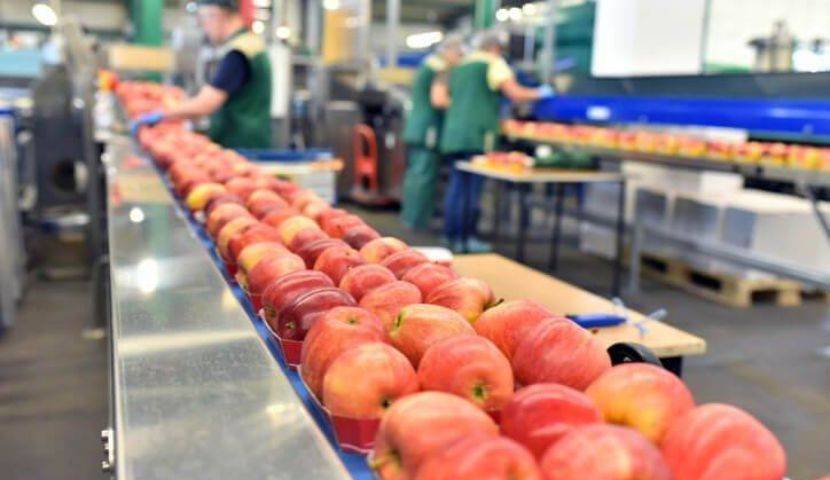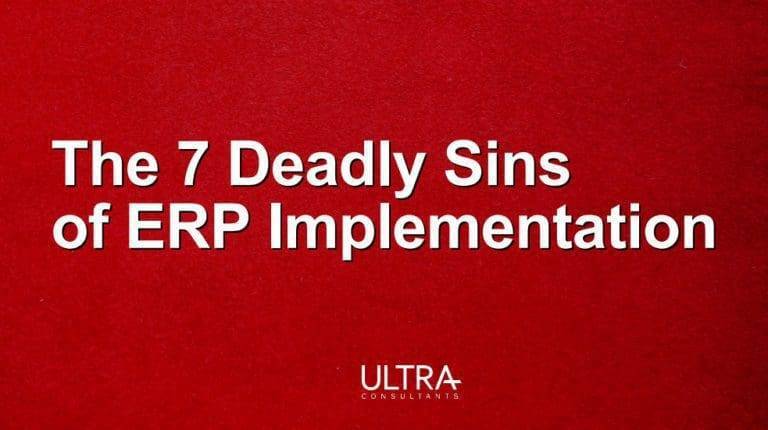As an independent ERP consulting firm, we’re often called to help processors seeking to evaluate food and beverage ERP systems.
Whether partnering with a craft brewer based in the Pacific Northwest, or guiding a processor of snack foods based in the Midwest, we employ a strategic approach to enterprise system selection to improve key processes related to production processes, operations, traceability, data management and more.
What drives a project team to seek to evaluate food and beverage ERP systems in the first place? We see the challenges come from several areas.

The Challenges if Disparate Business Systems
It’s not unusual to hear food and beverage manufacturers say that they lack integrated tools to streamline lot trace management, recipe management, document control and other related functions.
Many of the project teams we speak with still use stand-alone, siloed solutions to handle these key functions. It’s common for organizations to depend on manual spreadsheets for key processes, resulting in error-prone and inefficient processes.
It can be overwhelming to know where to start when it comes to upgrading enterprise technology solutions.
Industry Disruptions
Other challenges driving teams to evaluate food and beverage ERP systems is coping with the continuous disruption in the industry. The disruptive forces come from changing market demands and rapidly changing food habits as driven by the requirements of diverse populations and generations.
Food safety mandates are also part of the disruption in the market, impacting compliance requirements related to reporting, document control, recipe and ingredient tracking and more.
This means food and beverage companies must implement the appropriate processes and systems to not only manage recalls, but also offer the flexibility to adjust and accommodate changing regulations and reporting requirements.
Start Here to Evaluate Food and Beverage ERP Systems
Based on our decades of expertise as business improvement consultants, shared here are the three top considerations to keep in mind when beginning to evaluate food and beverage processing ERP systems.
1 – Think Business Process Improvement Before Technology
Laying new technology on top of broken processes won’t make a difference to the bottom line.
For processors starting to evaluate food and beverage ERP systems, we caution teams not to jump to demos from vendors providing purpose-built solutions that address industry-specific processes and business requirements.
Ultra Consultants has guided top processors to go beyond technology selection and broaden the focus to identify ways for improving business processes.
We stress that the most successful projects start with business process improvement.
This approach puts the focus on creating a vision of the desired future state from the current state – and on to defining the business value for the project.
For the most effective projects, this foundation aligns expectations with management, improve the efficiency of the team, eliminate process waste, and reduce the time to benefit for your project.
Read the Evans Food Case Study to see the benefits of starting with business process improvement.
2 – Move to “One Version of the Truth”
As we noted above, the use of stand-alone systems and spreadsheets can cause a food processor headaches. With lack of integration of key business functions, it’s nearly impossible for a food processor to get to one version of the truth on critical benchmarks like gross margin, inventory levels or production schedules.
Version control is a nightmare when spreadsheets are emailed back-and-forth or stored on individual computers. As a result, multiple versions related to formulations, traceability, recipe management or other key areas means the company is not working from one version of the truth.
Customer data is also a challenge to manage with lack of integrated systems. Each department often creates and manages its own spreadsheet containing different information about the same customer in a range of data formats. One might track sales data, while another might hold billing data. Another might track completely different data on the same customer in a totally different format.
Unfortunately, lack of system integration is often just one issue.
The problems can also stem from functional areas working in silos or poor management of master data across the enterprise.
When it comes to “one version of the truth,” it is important to begin with the end of mind – involving a focus on moving from the current state to a desired future state. This involves business process re-engineering to review the problems in the current state. Then, the next step is to design a new business process that eliminates waste and improves productivity.
The industry trade journal ProFoodWorld highlighted the importance of using ERP to create one source of the truth.
Read the article which showcases how Ultra Consultants played a part in this successful project at a craft brewery.
It’s a real-world example of how a processor met project objectives to reduce reliance on spreadsheets and move toward real-time inventory and “one source of truth” in with an integrated ERP platform.
3 – Understand Food Safety Requirements
The regulatory environment is always changing, impacting compliance requirements related to food safety. This means food and beverage companies must implement the appropriate processes and systems to not only manage recalls, but also offer the flexibility to adjust and accommodate changing regulations and reporting requirements.
To meet strict food safety mandates, the ERP system must enable lot control and traceability, both forwards and backwards all the way down to a container level. Food safety mandates also require advanced First Expiration, First Out (FEFO) inventory management.
The most robust food safety programs are based on processes and solutions that meet not only today’s regulatory mandates but scale to accommodate future regulations.
Document management is critical to meeting food safety plan mandates. The ERP system must deliver tightly managed version control on key documents e.g., Certificates of Authenticity (CoAs) as well as recipes and formulations. Similarly, the ERP system must provide the ability to specify a lot for a customer based on the customer’s specifications. These specifications may differ from customer to customer.
In addition, ERP solutions must comply with extensive quality management requirements including a well-documented Non-Conformance Report and Corrective Action Preventive Action process, as well as the ability to generate Safety Data Sheets (formerly MSDS) based on a specific formula.
As your team begins to evaluate food and beverage ERP systems, read more about industry compliance services to understand the best path forward.
Final Thoughts
Enterprise technology is a critical part of improving processes related to track and trace of ingredients, optimization of shelf life and flexibility for changing ingredient formulas, food safety documentation among others.
For those companies seeking to evaluate food and beverage processing ERP, the ideas shared above are a terrific place to start. As outlined, we suggest a focus on business process improvement, striving for “one version of the truth,” as well as keeping in mind the need for food safety reporting and tracking.
See additional resources for ERP education to get deeper insight.
Looking to evaluate food and beverage processing ERP? Contact Ultra to discuss your specific requirements.
The 7 Deadly Sins of ERP Implementation
Some mistakes are just bad strategic or financial decisions. Some are the inevitable consequence of situational or organizational factors. Some, however, are the result of process-oriented or people-centric choices – and are easily avoided. These are The Seven Deadly Sins of ERP Implementation.
Table of Contents
More ERP material...
AI in Food and Beverage Manufacturing
Discover how AI is revolutionizing food and beverage manufacturing, enhancing quality, reducing…
How ERP for Quality Control Eliminates Manual Documentation Chaos
This post will examine why managing quality records outside of an ERP…
Assessing Your AI Maturity
This article breaks down how businesses can measure their AI maturity to…




